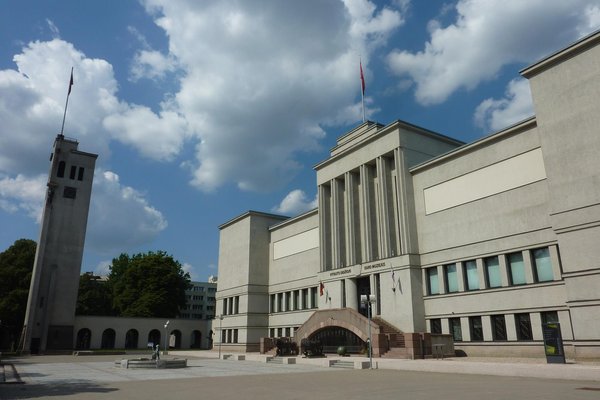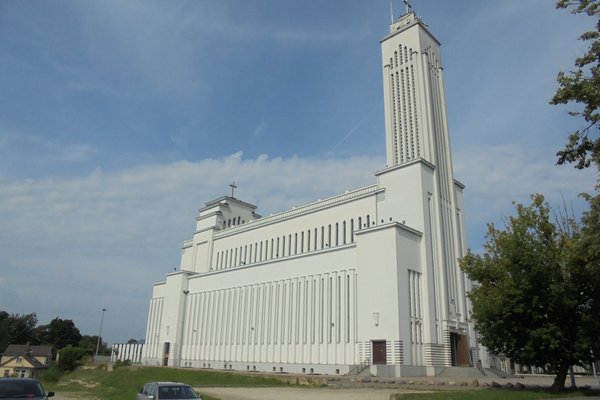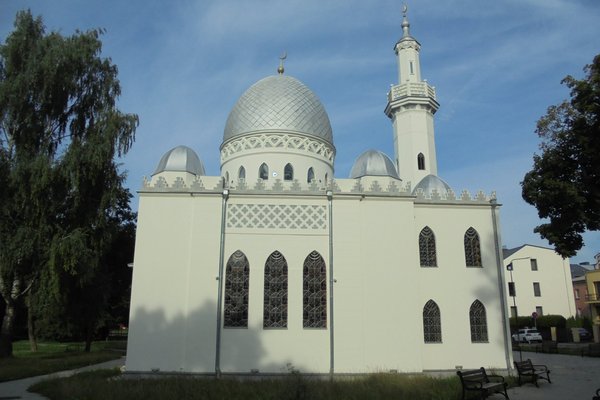Lithuania
Modernist Kaunas
Modernist Kaunas: Architecture of Optimism, 1919-1939, represents the redevelopment of its urban landscape as Lithuania’s new capital.
Naujamiestis (New Town) and the adjacent Žaliakalnis (Green Hill) contain numerous examples of early Modernist architecture, adapted to its small scale and local character. Notable buildings include the Central Post Office, the Officers’ Club, the Bank of Lithuania, and the former Bank of Agriculture.
Community Perspective: the nominated area can be easily found on maps of Kaunas for its rigid plan and is easy to explore on foot; only the recommended Christ Resurrection church takes a detour.
Site Info
Official Information
- Full Name
- Modernist Kaunas: Architecture of Optimism, 1919-1939 (ID: 1661)
- Country
- Lithuania
- Status
-
Inscribed 2023
Site history
History of Modernist Kaunas
- 2023: Inscribed
- Inscribed
- Type
- Cultural
- Criteria
- iv
Links
- UNESCO
- whc.unesco.org
- Related
-
- visit.kaunas.lt — Visit Kaunas
All Links
UNESCO.org
- whc.unesco.org — whc.unesco.org/
Related Resources
- visit.kaunas.lt — Visit Kaunas
Community Information
- Community Category
- Human activity: Urban planning
Travel Information
Recent Connections
-
Perfect Inscriptions
2023 -
Tomb of the Unknown soldier
Tomb of the Unknown warrier in the Squa… -
Eternal Flames
Tomb of the Unknown warrier in the Squa…
Connections of Modernist Kaunas
- Trivia
-
-
Depicted in Mizielinska Maps
Zaliakalnis furnicularSee i.pinimg.com
-
- History
-
-
Located in a Former Capital
"Kaunas served as capital of the new nation-state from 1919 to 1939" (AB ev)
-
- Architecture
-
-
Neo-Baroque
Choral SynagogueSee en.wikipedia.org
-
Garden City Movement
"Žaliakalnis .. was developed as a garden city residential area" (AB ev) -
Wooden architecture
Garden City Area: "low density area with brick and wooden houses" (AB ev) -
International style
"demonstrate the plurality of architectural styles representing the Modern Movement in Kaunas" (AB ev) -
Art Deco
"The nominated property is seen as a site of architectural experimentation, where influences of .. Art Deco ..were interpreted by local architects trained in European architectural schools." (AB ev) -
Modern Urban Planning
"Kaunas was transformed into a modern city based on the assimilation of modern urban planning..." (OUV statement Brief description)
-
- World Heritage Process
-
-
Inscribed on a single criterion only
Crit iv -
Perfect Inscriptions
2023
-
- Religion and Belief
-
-
Jewish religion and culture
Choral SynagogueSee en.wikipedia.org
-
- Human Activity
-
-
Locations for playing sport
"South of the Kaukas and Garden City areas lies the Ąžuolynas Park and Sports Complex. Developed as a recreational area using portions of a natural forest, it formed part of a city green belt. Sports facilities constructed in 1920-1922 included the Kaunas Stadium, the Hall of Physical Education and the Basketball Arena. The original stadium was demolished in the Soviet era and replaced by the Darius and Girėnas Stadium in 1978" (AB ev)
-
- Constructions
-
-
Eternal Flames
Tomb of the Unknown warrier in the Square of Unity in front of the Vytautas the Great War MuseumSee en.wikipedia.org
-
Tomb of the Unknown soldier
Tomb of the Unknown warrier in the Square of Unity in front of the Vytautas the Great War Museum.See en.wikipedia.org
-
- WHS on Other Lists
- Timeline
-
-
Built in the 20th century
Focuses on "Architecture of Optimism, 1919-1939"
-
- WHS Names
-
-
Epic Subtitles
"Architecture of Optimism, 1919-1939"
-
News
No news.
Recent Visitors
Visitors of Modernist Kaunas
- Adrian Turtschi
- Alexander Barabanov
- Alexander Lehmann
- Alikander99
- Ali Zingstra
- Aljaz
- Ammon Watkins
- Ana
- Argo
- Artur Anuszewski
- Astraftis
- basementonline
- Bin
- ChrisDorn
- ChrisN
- christof
- Christoph
- Christravelblog
- Claire Bradshaw
- Cody Ayers
- Corinne Vail
- Csaba Nováczky
- CugelVance
- cwthong
- czesioszpachelka
- Daniel Chazad
- David Berlanda
- Dimitar Krastev
- Dr. Caligari
- Eirini
- eljx1988
- Els Slots
- Erik G
- Erik Jelinek
- Ertai
- Eva Kisgyorgy
- Evgenii
- Feldhase
- Filippo Ubaldi
- FS
- George Gdanski
- GeorgeIng61
- Giannis75
- Grzegorz Andruszkiewicz
- Hadrianus
- Harald T.
- Harry Mitsidis
- Hdhuntphotography
- henrik_hannfors
- hotpickle
- Hubert
- Hurrvinek
- Ivan Rucek
- Jakob F.
- Janos
- Jarek Pokrzywnicki
- Javier
- Jesse S 2010
- Jezza
- JobStopar
- Jonas Kremer
- JoStof
- Joyce van Soest
- jxrocky
- Karito Vies
- Kasper
- Kbecq
- Ken DJ
- Kerékgyártó
- Kevin247
- Klara Woodson
- Krijn
- lichia
- Loic Pedras
- Luboang
- Lucio
- Ludvan
- Lukasz Palczewski
- Maciej Gil
- Małgosia Łupicka
- Martina Rúčková
- Mathijs
- Max
- Miloš Tašković
- miri2808
- nan
- Nick M
- nicku
- PabloNorte
- palka25
- Patrik
- Paul Schofield
- Petteri
- Philipp Leu
- Philipp Peterer
- Piotr Wasil
- Potsdamer
- pressdm
- Rafał Kałczuga
- Rahelka
- Ralf Regele
- Randi Thomsen
- Reisedachs
- Remigiusz
- Reza
- Roger Ourset
- Roman Bruehwiler
- Roman Raab
- Rudegirl
- Sebasfhb
- Sergio Arjona
- shoaibmnagi
- Solivagant
- Ssong.x
- Stan
- Stanislaw Warwas
- Stijn
- Svein Elias
- Szucs Tamas
- Taotao Chen
- Tarquinio_Superbo
- Tatiana Nikulnikova
- Tcchang0825
- Tevity
- Thomas Buechler
- Timothy C Easton
- tingmelvin
- tommasorossotti
- triath
- Tsunami
- usagi1974
- Van Hung
- voyager
- Westwards
- Wojciech Fedoruk
- YaroMir
- zfish
- Zhenjun Liu
- Zoë Sheng
Community Reviews
Show full reviews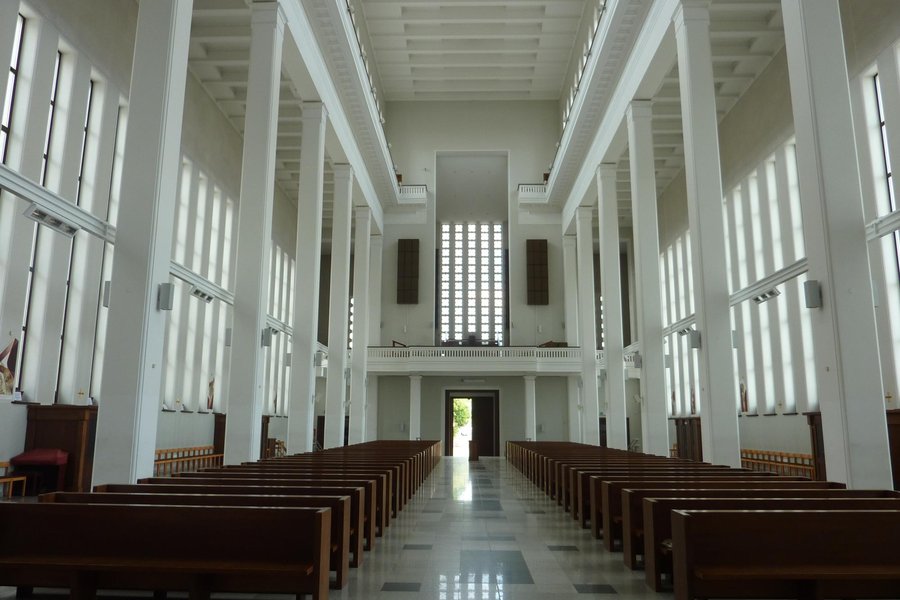
From the current scores it is clear that Kaunas isn't viewed very highly here, but having been to most of the European countries, Kaunas's OUV clearly shines. It is the only city I have been to where modernist architecture plays a very central role, definitely a result of the christening of Kaunas as the interwar capital of Lithuania whilst Vilnius remained in Polish hands and the ensuing construction, and gave a markedly different vibe to every other European city I have visited. In fact, I don't think there is another European city-architectural inscription regarding the interwar period, but I'm happy to be corrected.
Getting there
The easiest way to get into Kaunas is via Ryanair and Wizz Air into Kaunas Airport, or trains from Vilnius. I got into Kaunas by plane when it was still on the T List before heading off to Vilnius.
Getting around
As mentioned by the other reviewers, the city is compact. Indeed, I was able to view most (if not all) of the important sites in Kaunas within half a day before catching my train onwards to Vilnius, all by foot, although the inscribed site is significantly larger (a triangle between the edge of the city zoo, Old Town, and the train station). Laisvės al. is the main throughfare - if you're short on time, focus on this and the two parallel streets to it. The Christ Resurrection Church is the only major thing way off the main areas, but it …
Keep reading 0 comments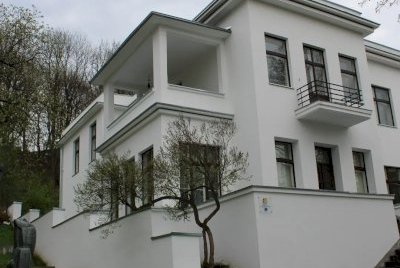
Due to its impending proposal and my budding interest on modern architecture I added Kaunas to my baltic ittinerary. Now, I want to make clear that I'm not an architect and I feel in no way capable of examining the merit of kaunas modernist buildings. What I can offer is my opinion on the site, which overall was positive.
After WW1 Lithuania emerges as a new nation born out of the crumbling Russian empire. However they're stuck with an unusual problem. Their historic capital, Vilnius, is not part of their state, but rather part of neighboring Poland. As such the newly founded states sets out to build a capital basically from scractch following the architcetural trends of the time. They choose Kaunas as the place to do this. During the interwar period around 1200 buildings are erected in the city. Many of them are still kicking around which allows for a wonderfull insta-shot of how architecture looked at the time. At least thats what the proposal states.
Kaunas does in fact have lots of modern architecture and its easy to grasp even to the untrained eye. some of these buildings I found particularly enticing (the iljiani family house, the artist house and Christs resurrection church). However the strong suit of Kaunas is that its an ensemble. You really can just stroll around and find good examples of cutting edge interwar architecture in every corner of the new city. Even with a whole day I couldn't see all the …
Keep reading 0 comments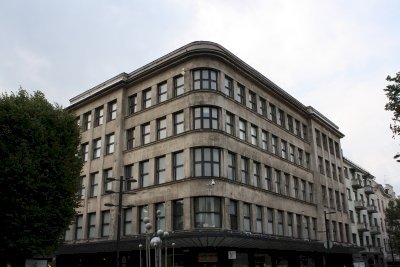
August 2017 - After the day on the Curonian Split, our next Goal was Vilnius. We had dinner in Klaipeda and had the stupid idea of going a bit further on the Highway that day. After 1 hour we had to stop as we just fell asleep in the car. So we arrived really early in the morning in Kaunas. Fortunately a small cafe had already opened and we had some breakfast. We walked the Main street and a parallel street to Marvel at the modernist buildings. Well, they are quite nice, but as a standalone Whs? We also drove by the Big white church, which is quite amazing. Definitely worth a stop between Vilnius and Klaipeda.
Keep reading 0 comments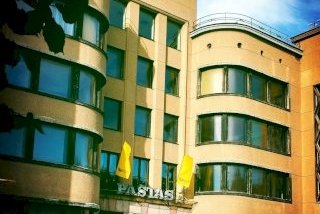
Building a new capital from scratch, often results in a large and consistent set of period architecture. Fatehpur Sikri or Jaipur come to my mind. A capital needs many buildings. You need offices for the government, you need more residential areas for the influx of inhabitants and you need to provide public services. And more likely than not, you will build using the at the time hip architectural style. Kaunas is no different.
After WW 1, the Polish occupied the main city of Lithuania: Vilnius. The temporary capital of the new found country of Lithuania was established in Kaunus. The original historic town was greatly enlarged by new, modernist buildings. They went all in and the amount and consistency of the modernist buildings is unique.
OUV
I feel the modernist architecture is unique and consistent enough to warrant inscription. It's not backward looking, but represents cutting edge architecture of the time.
Getting There
Kaunas lies on the main highway between Vilnius and Klaipeda (Curonian Split). It's a natural stop, if you travel from Vilnius to the coast and plan to tick off all sites in Lithuania In the city, I did everything on foot.
Keep reading 0 comments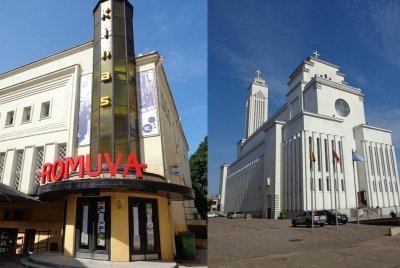
Lithuania gained independence after World War One, however Vilnius was soon after given to Poland. Kaunas was then designated as the new capital of Lithuania. As a consequence, many buildings were built in homogenous modernist style in a short period of time – actually till 1940 when Lithuania was taken by Germany then USSR.
It is easy to identify this part of the city on a map of Kaunas, with its straight and large streets, at the East of the historical area. Laisves avenue is the main street of the area. Arriving in the morning from Klaipedia, we stayed one night in Hotel Kaunas (easy to remember that name!) right in the centre of that area, before making our way to Vilnius on the next day, in August 2017.
Tourist website of the city provides a good list of most interesting interwar buildings; most of them close to each other. Walking Laisves avenue from East to West, we could see the post office, the former headquarters of Pienos Centras Company (at a street croner), Romuva cinema (on the north side of Laisves avenue, not immediately on the avenue but some 50 m back). Still walking to the East on Laisves avenue and turning next right (South) after seeing the cinema, we immediately found the former Officers’ Palace. One block north of Laisves avenue, you can easily reach Unity Square, surrounded by many “interwar” buildings: former ministries, schools, and the War museum. We wanted to end our tour at Christ Resurrection …
Keep reading 0 comments
